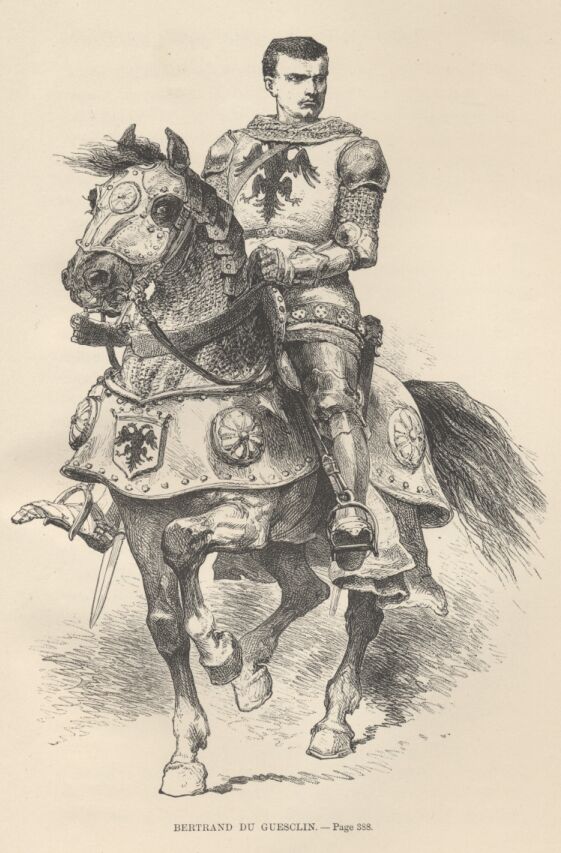The commander of Bécherel was Sir Hugh Calveley, a Cheshire knight of renown, whose reputation for surprise and ambuscade must have been near to that of du Guesclin’s for the latter warned [the Marshal] d’Audreham that it would be perfectly within the pattern of Calveley’s operations for him to try a raid on Montmuran to seize the Marshal. (The humble du Guesclin would probably not have commanded a price.) To guard against a surprise attack du Guesclin concealed thirty archers along the road from Bécherel with orders to prevent any approach by Calveley and to warn the garrison of Montmuran.
His assumption proved correct, and on hearing the archers engaging with Calveley’s troops both du Guesclin and d’Audrehem hurried to the scene of action and a fierce skirmish ensued. Sir Hugh Calveley, flung to the ground from his horse by a violent charge from a certain Enguerrand d’Hesdin, was captured as a prize. It was at this point, having fought fiercely and well, leaving few fugitive English to regain Bécherel and tell the tale, that du Guesclin was taken to one side by a knight of Caux called Eslatre des mares, the Captain of the castle of Caen, and knighted on the field of battle, des Mares girding him with his own sword. According to a strong local tradition, the ceremony of knighthood was completed in the small chapel of Montmuran. Here du Guesclin received the white robe of knighthood, and from this time adopted his famous war cry “Notre-Dame Guesclin!” which was soon to be heard on a wider stage.
Stephen Turnbull, the Knight Triumphant: The High Middle Ages, 1314-1485 (London: Cassell & Co, 2001), 74.
Short Stories on Honor, Chivalry, and the World of Nobility—no. 504










